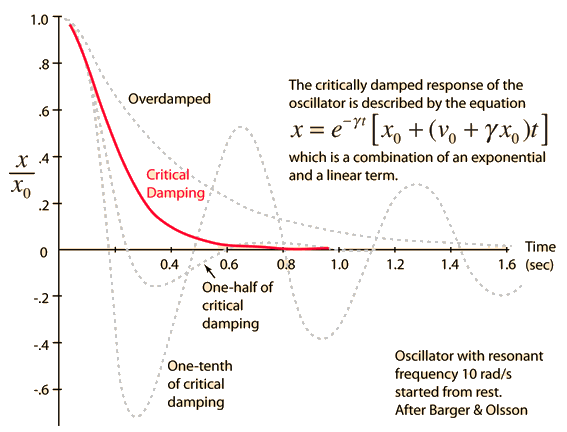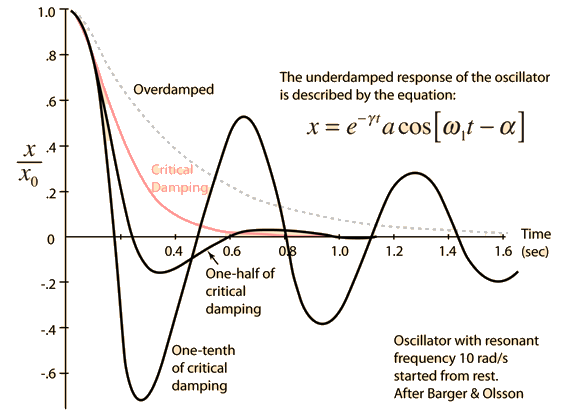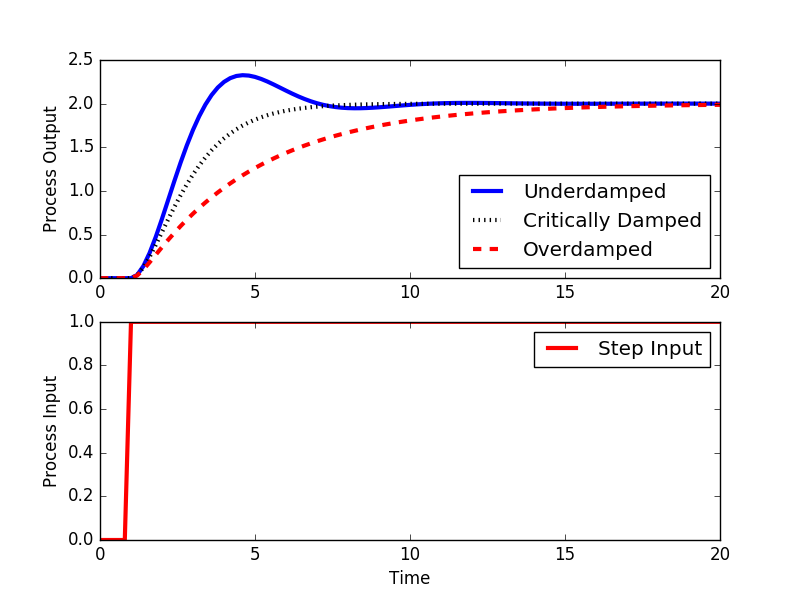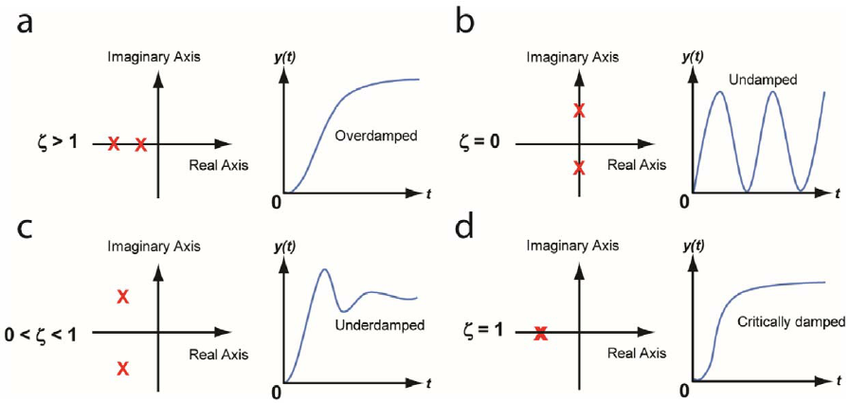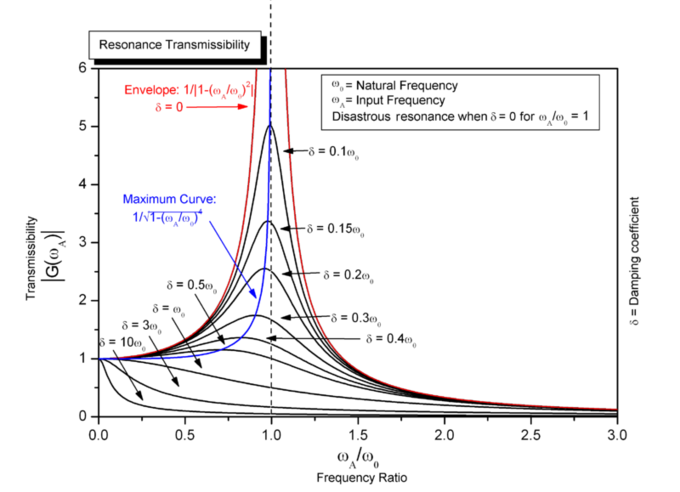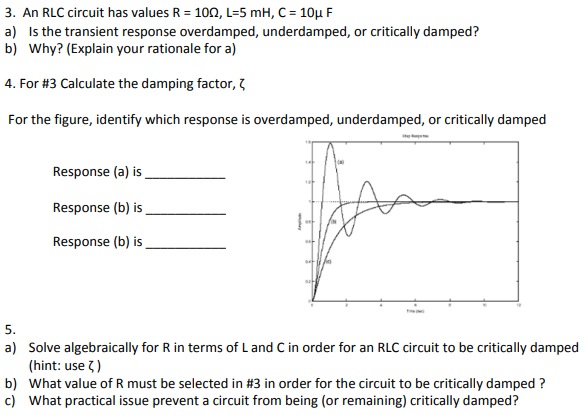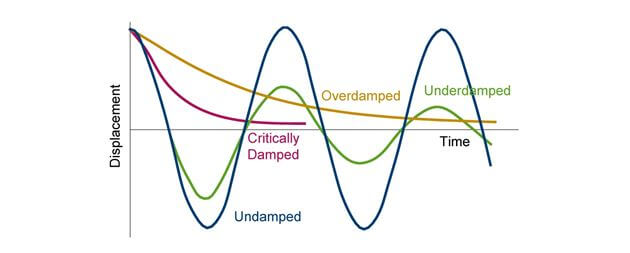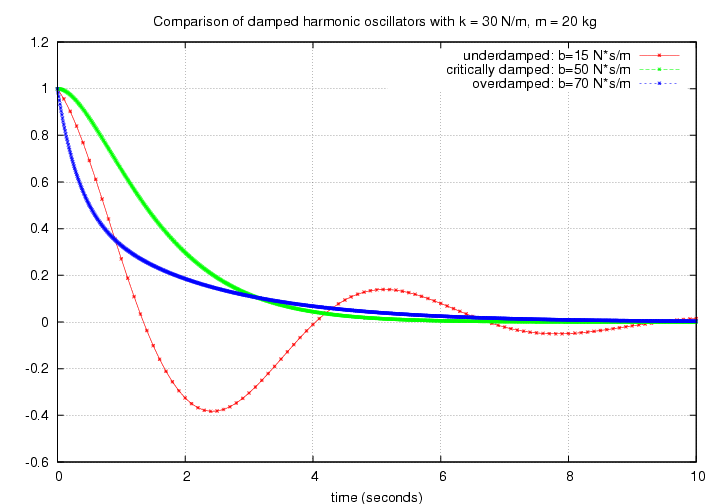What Is Damping Ratio And Critical Damping
Its slope depends on e s e f.
What is damping ratio and critical damping. The damping ratio is a system parameter denoted by ζ zeta that can vary from undamped ζ 0 underdamped ζ 1 through critically damped ζ 1 to overdamped ζ 1. Critical damping just prevents vibration or just allows the object to return to rest in the shortest time. 5 damping is low but still should reduce the amplitude of displacement with time of a system undergoing vibration. Critical damping means that a system will not vibrate at all on the other hand 0 damping means that the system will keep on vibrating without any reduction in the amplitude or frequency.
The ratio varies from 0 01 for lightly damped systems to 0 15 or more for highly damped systems. 5 damping means that the damping is 5 of critical damping. Critical damping coefficient 2 x the square root of k x m 2 x the square root of 100 x 10 63 2 ns m. When alpha 2 omega 0 2 0 gamma is still real but now the system is said to be over damped.
20 3 the effective damping ratio of the system is shown to be directly proportional to the material damping ratio ζ s for a fixed modulus ratio e s e f. The damping ratio is a system parameter denoted by ζ zeta that can vary from undamped ζ 0 underdamped ζ 1 through critically damped ζ 1 to overdamped ζ 1. The modal damping ratio can be determined accurately with proper field tests. Damping restraining of vibratory motion such as mechanical oscillations noise and alternating electric currents by dissipation of energy.
An example of critical damping is the door closer seen on many hinged doors in public buildings. When alpha 2 omega 0 2 0 gamma is real and the system is critically damped. The damping ratio is a measure describing how rapidly the oscillations decay from one bounce to the next. The effective damping ratio of the system estimated by the half power bandwidth method applied to the frequency response function near the fundamental resonance is presented in table 20 1 a and plotted in fig.
Critical damping coefficient 2 x the square root of k x m 2 x the square root of 100 x 10 63 2 ns m since the actual damping coefficient is 1 ns m the damping ratio 1 63 2 which is much less than 1. So the system is underdamped and will oscillate back and forth before coming to rest. Since the actual damping coefficient is 1 ns m the damping ratio 1 63 2 which. Critical damping ccr is the least amount of damping that causes a system to return to its equilibrium position without oscillating.
